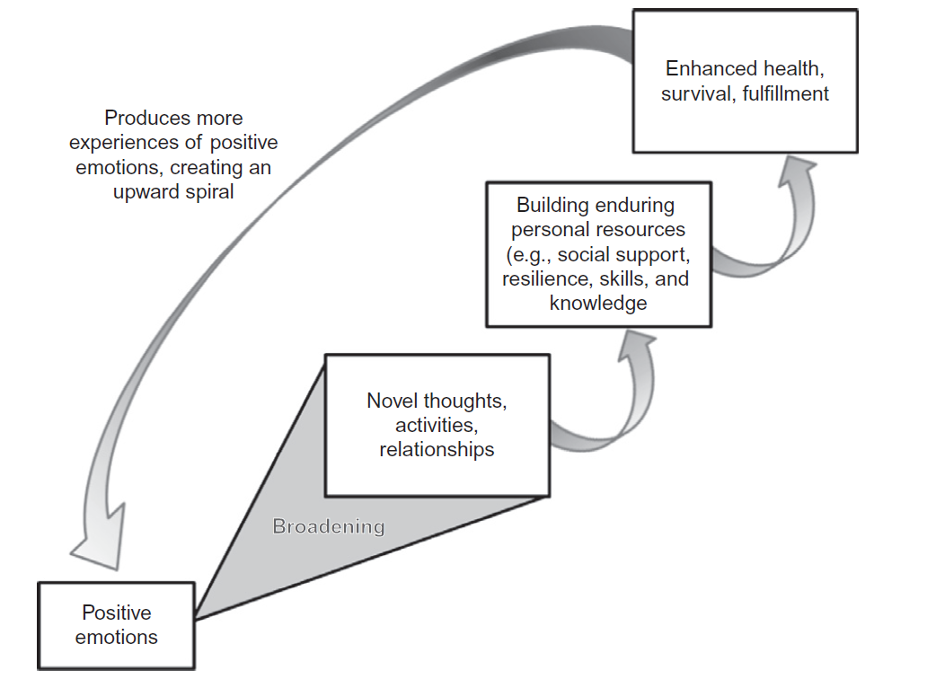What is the Broaden-and-Build Theory of Positive Emotions?

Barbara Fredrickson is a psychology professor at the University of North Carolina at Chapel Hill. In 1998, she coined the broaden-and-build theory in positive psychology suggesting that “positive emotions (including interest, love, joy, contentment) broaden one’s awareness and encourage novel, exploratory thoughts and actions. Over time, this broadened behavioral repertoire builds useful skills and psychological resources.” The resources she refers to can range from physical to intellectual to social in nature. Frederickson suggests that these resources are more sustainable than the transient emotional states that led to their acquisition.
You may have heard that our thoughts affect our feelings which in turn determine our behaviors. Sometimes we are happy with the result, and others, not. Once we’ve repeated certain (re)actions enough, they become habit. This can result in positive and negative effects. Let’s say for instance, you make a bad decision and rationalize that you were foolish to do what you did. You are likely to be self-critical. The resulting reaction may turn out to be something else you are upset about, putting you back where you began. It can be a vicious cycle. Humans tend to have a negativity bias, encouraging us to have this pessimistic outlook. However, if we take the opposite stance, let’s say, you do something you’re not proud of, but you show yourself a bit of self-compassion and think, well I can’t always expect to get it right (we’re all human after all), you may be motivated to give it another try. Repeating these more optimistic thought-feeling-action cycles eventually habituate into lasting behaviors. Therefore, you have gained not only new skills but also the personal resources necessary to tackle unwanted (automatic) thoughts and/or unhealthy (defeating) feelings. This theory supports the claim that when we do so, our wellbeing expands.
Originally, interest, love, joy, and contentment were the four positive emotions studied. Later, gratitude, serenity, hope, pride, amusement, inspiration, and awe were added to the list. Research into attributional relevance was sparse prior to Frederickson’s work in 2013. Although they were seen as existing measures in behavioral science, little structured research had been conducted. Frederickson concluded, nonetheless, that 9 of these 10 positive emotions demonstrated correlative response at it pertains to continued wellbeing. Awe is the exception.
Why do you suppose this is? What makes awe different? How would you define awe? When do you feel awe?
Stay tuned for a future blog about awe!
If you want to learn more about positive emotions and/or the broaden and build theory, check out Barbara Frederickson!

Reproduced from “Positive emotions broaden and build,” by B.L. Fredrickson, In P. Devine and A. Plant (Eds.) Advances in Experimental Social Psychology, 47, p. 16, Copyright 2013 Academic Press.
Adapted from “Positive emotions” by B.L. Fredrickson and M.A. Cohn, 2008, In M. Lewis, J.M. Haviland-Jones, and L.F. Barrett Handbook of Emotions (3rd Edition, p. 783). Copyright 2008 Guilford Press.
